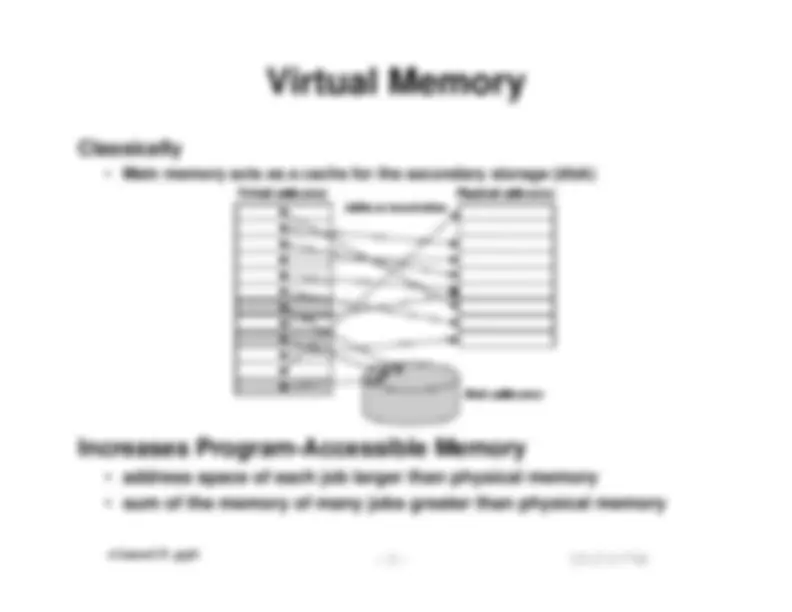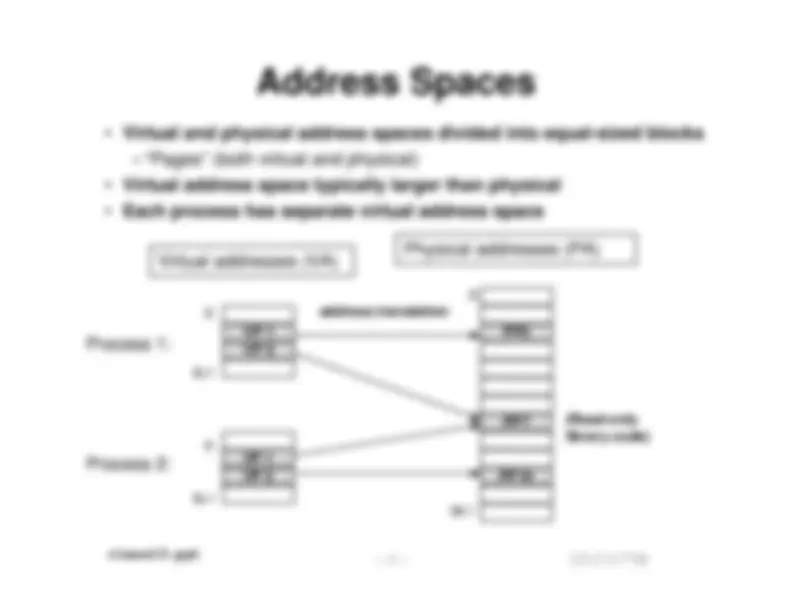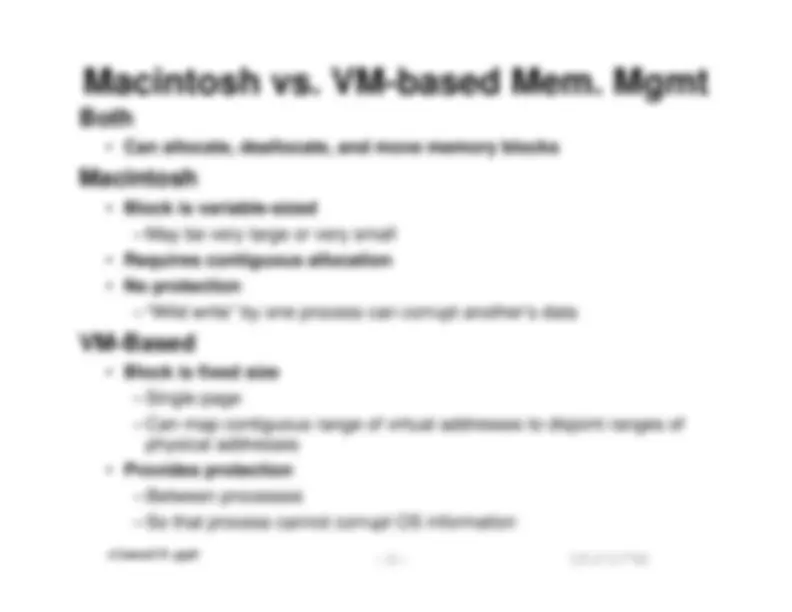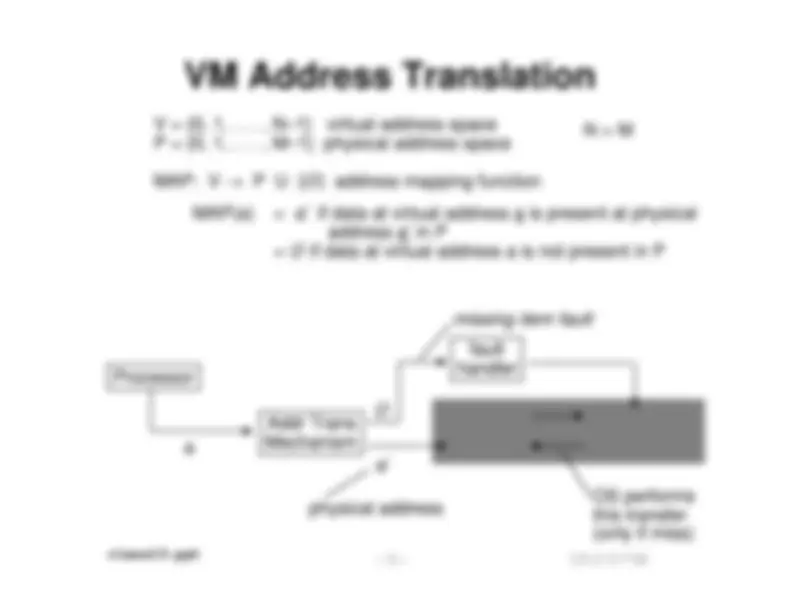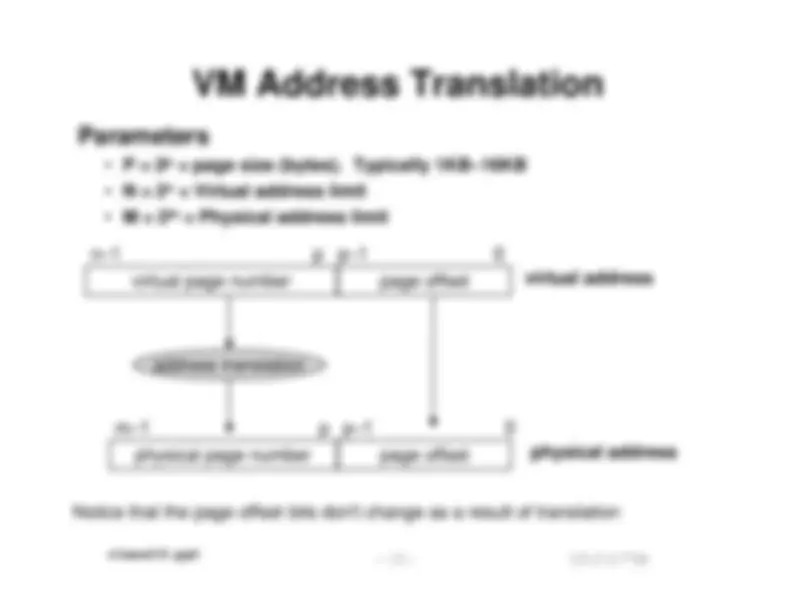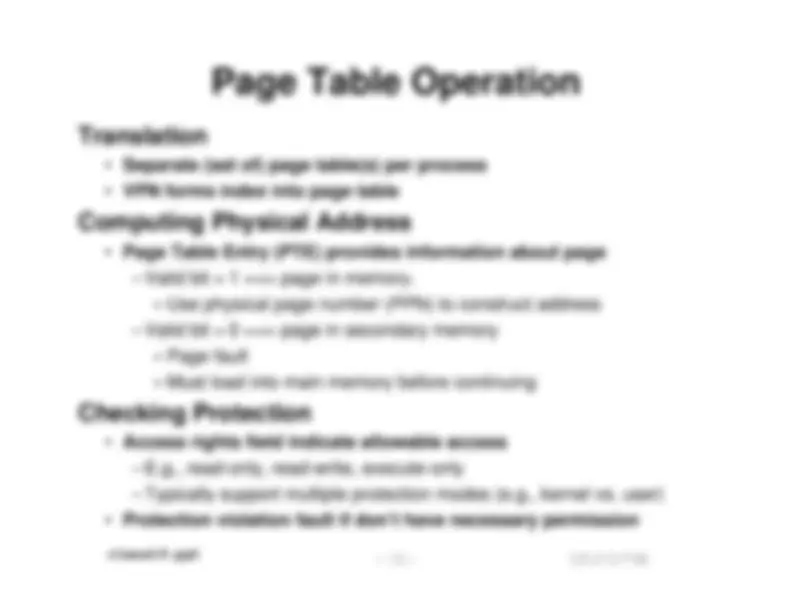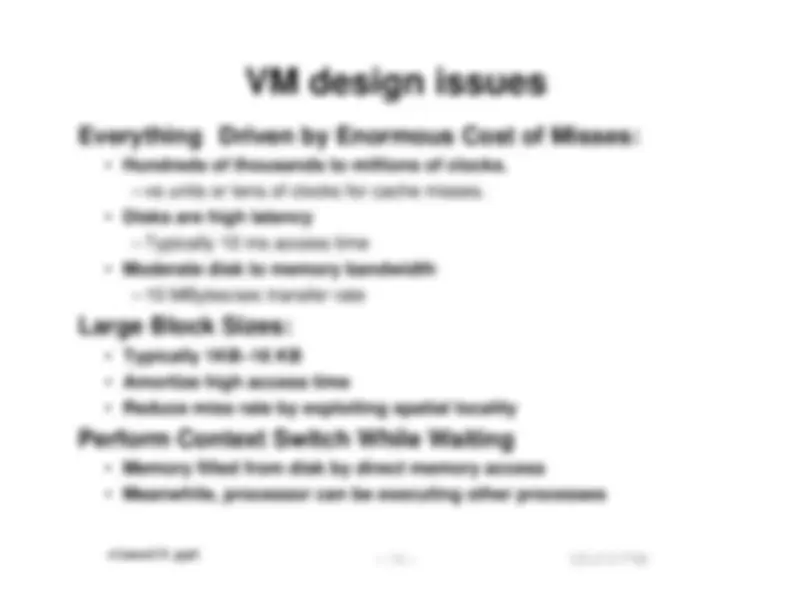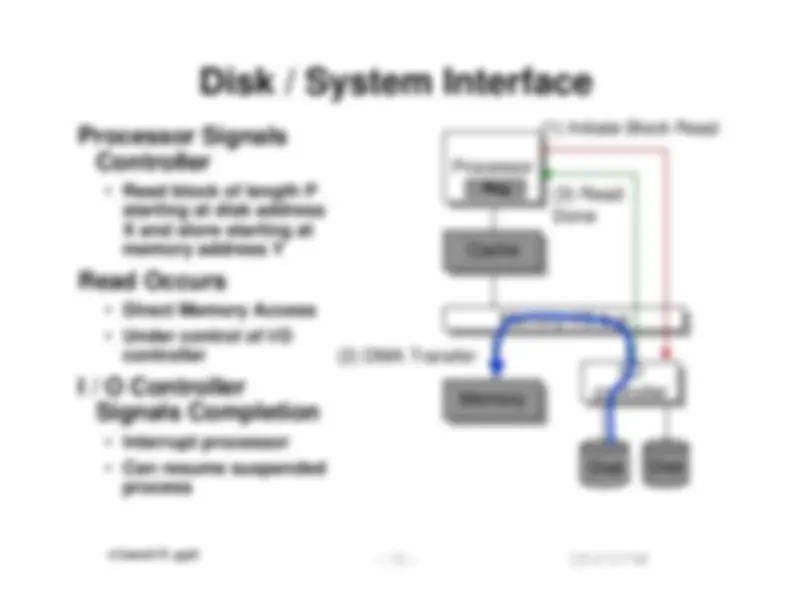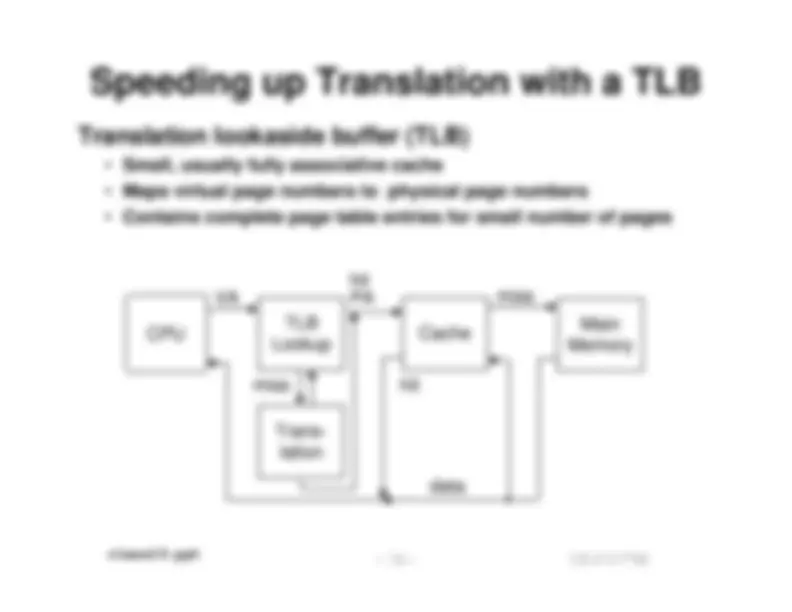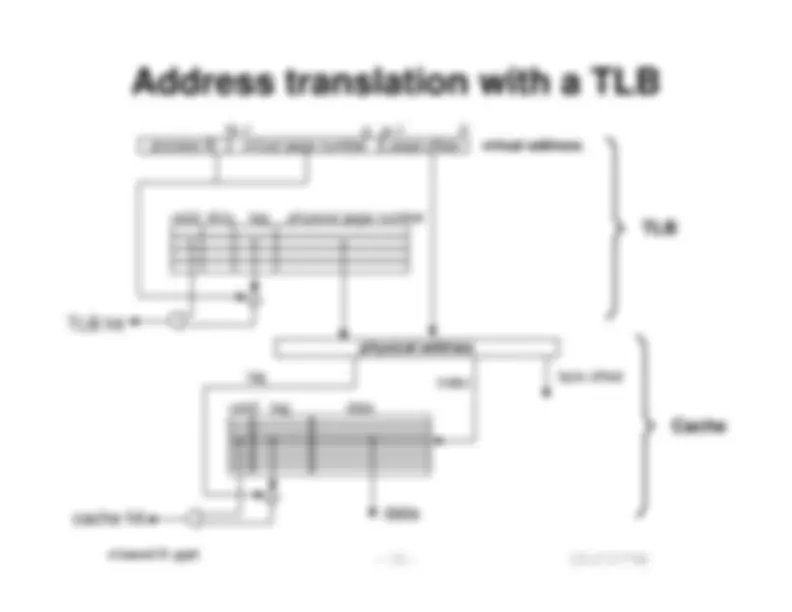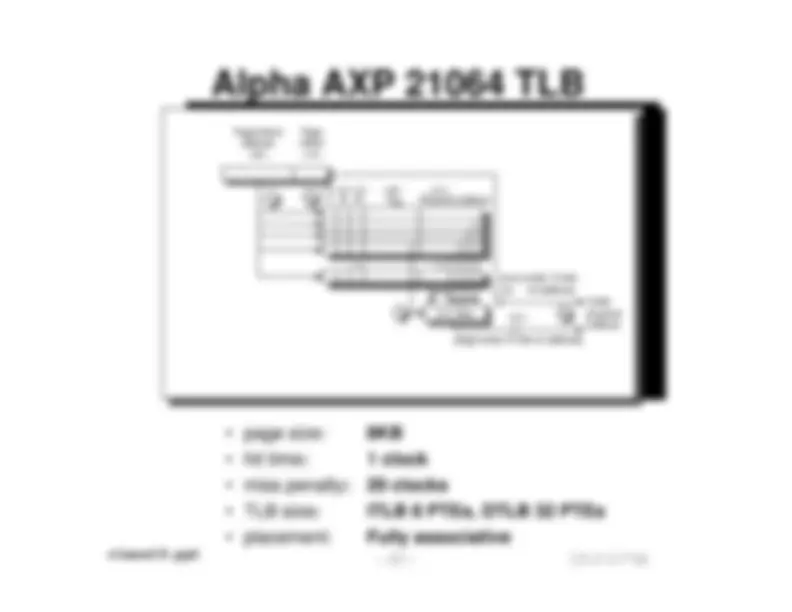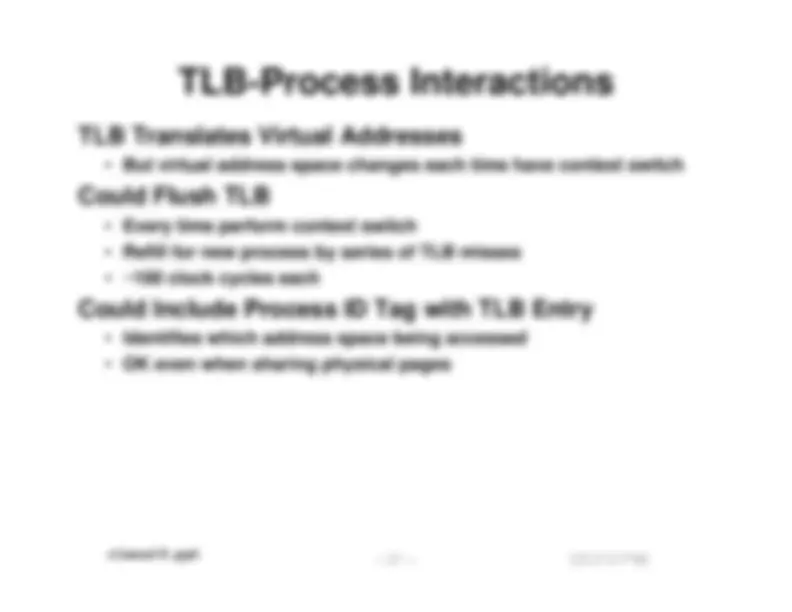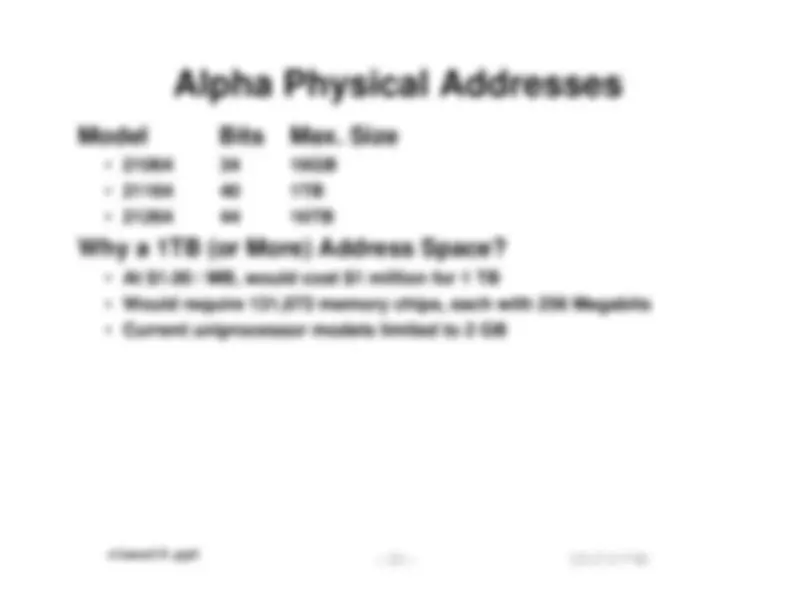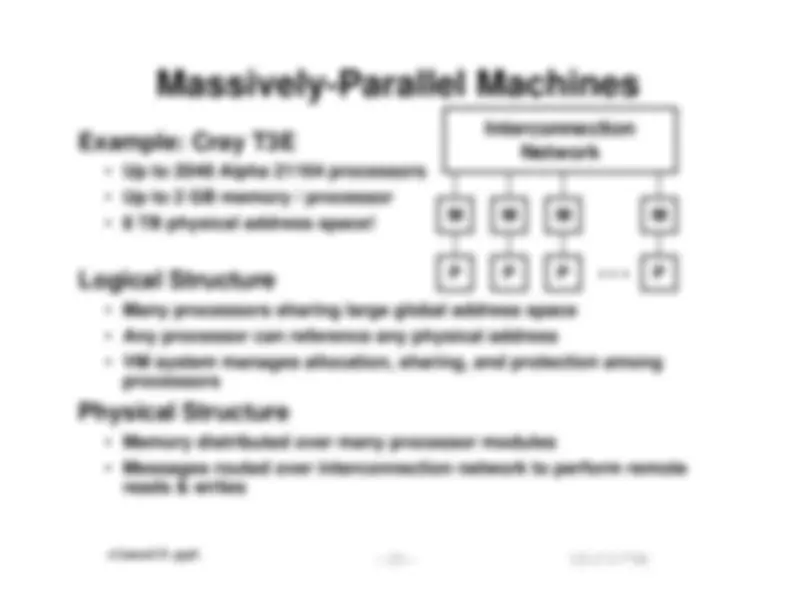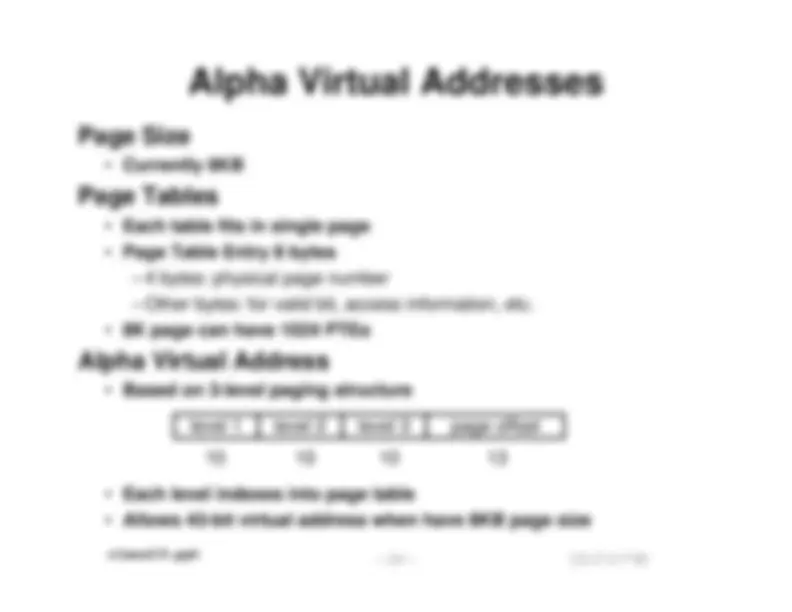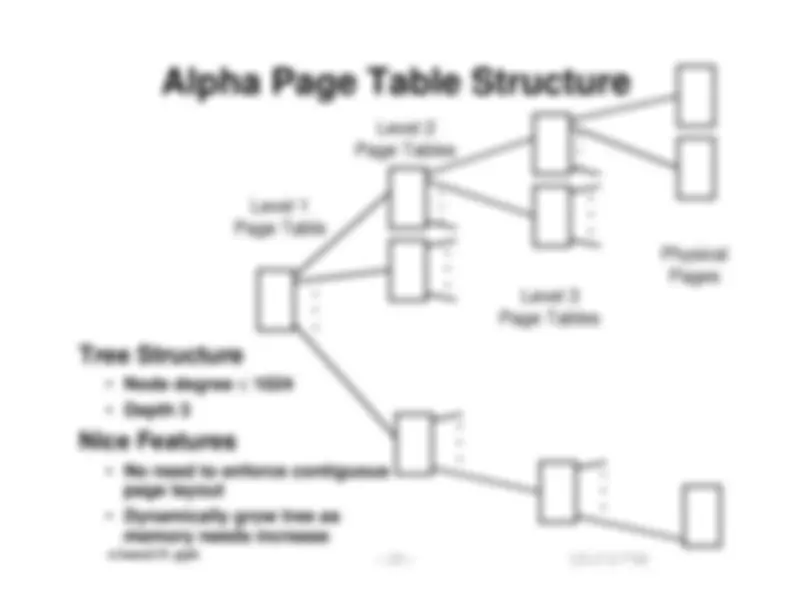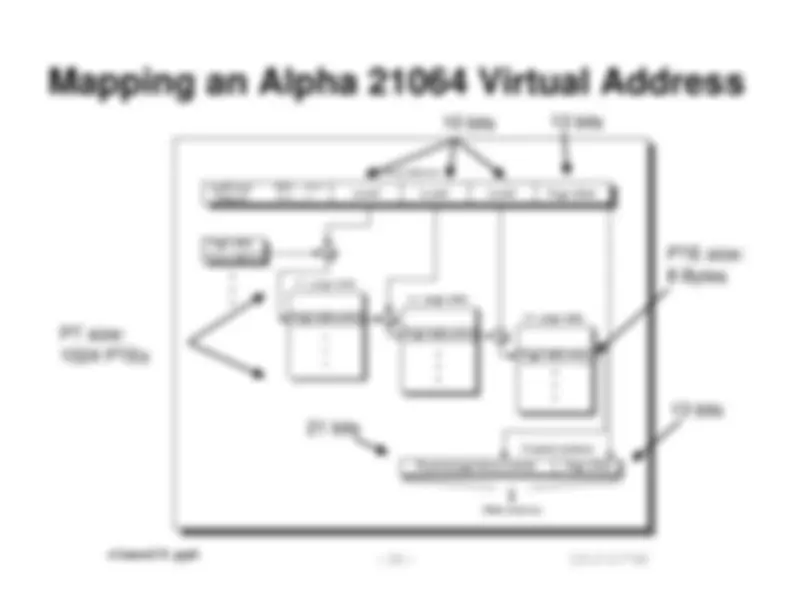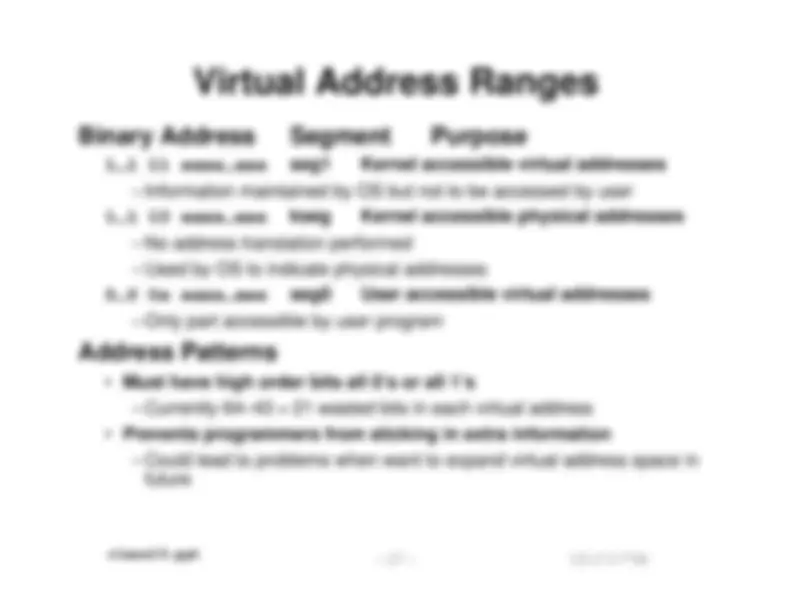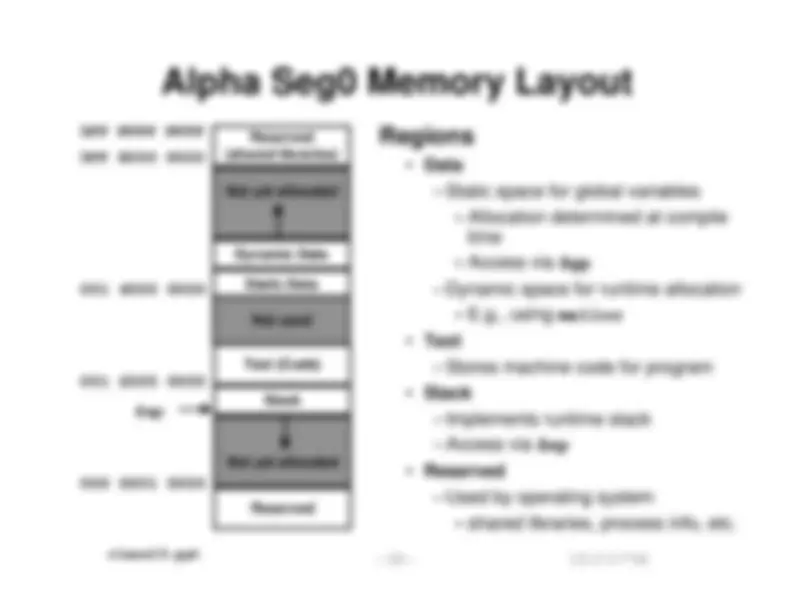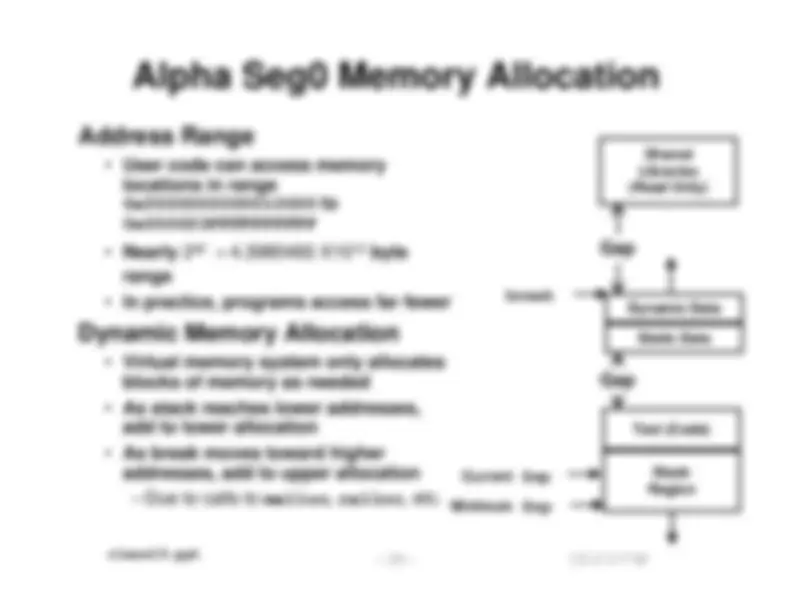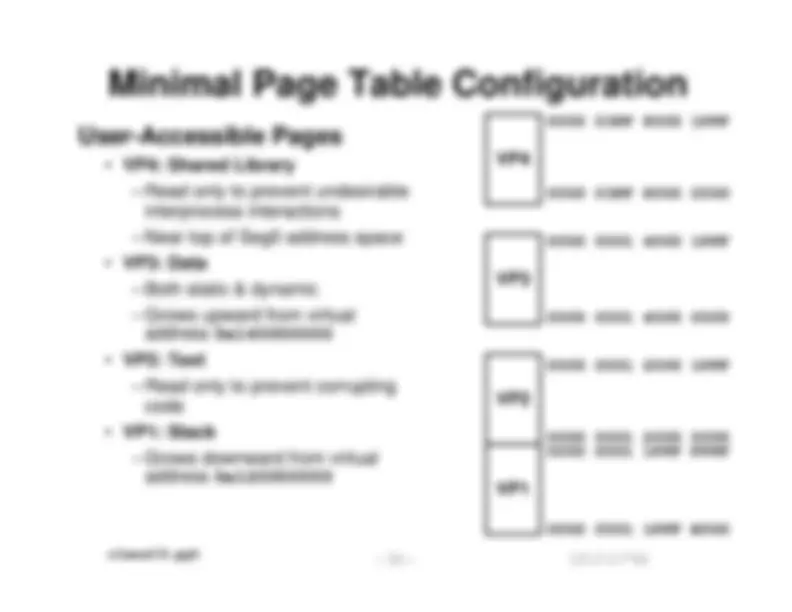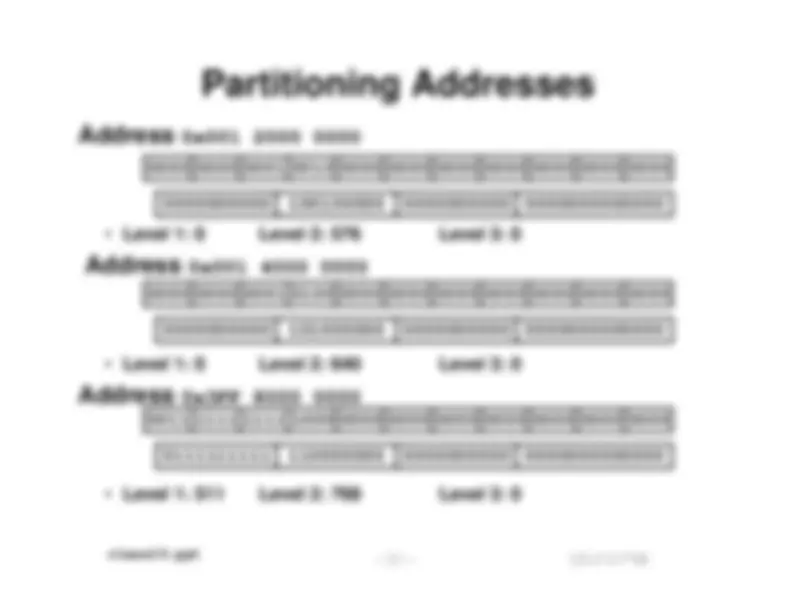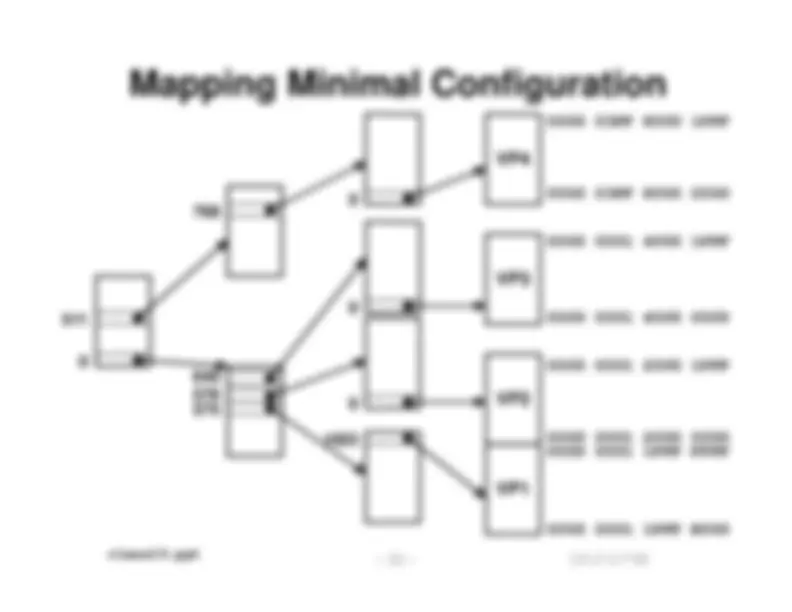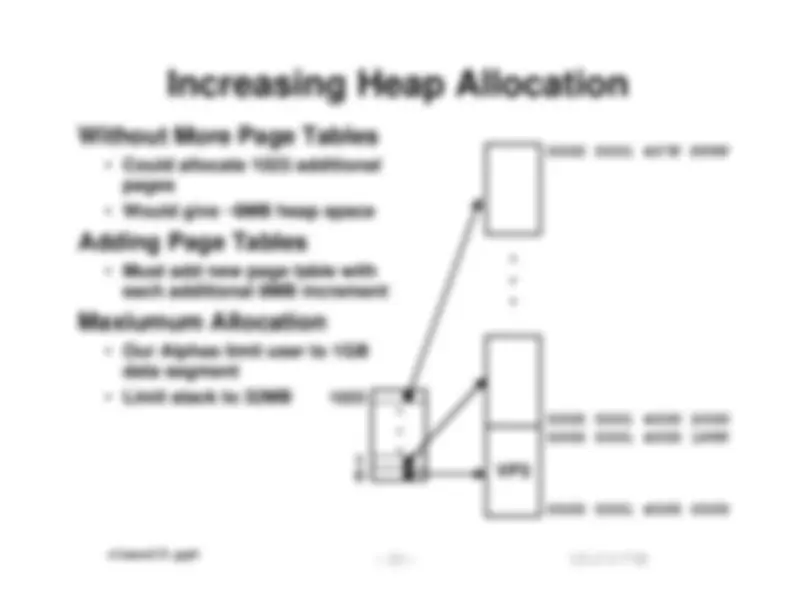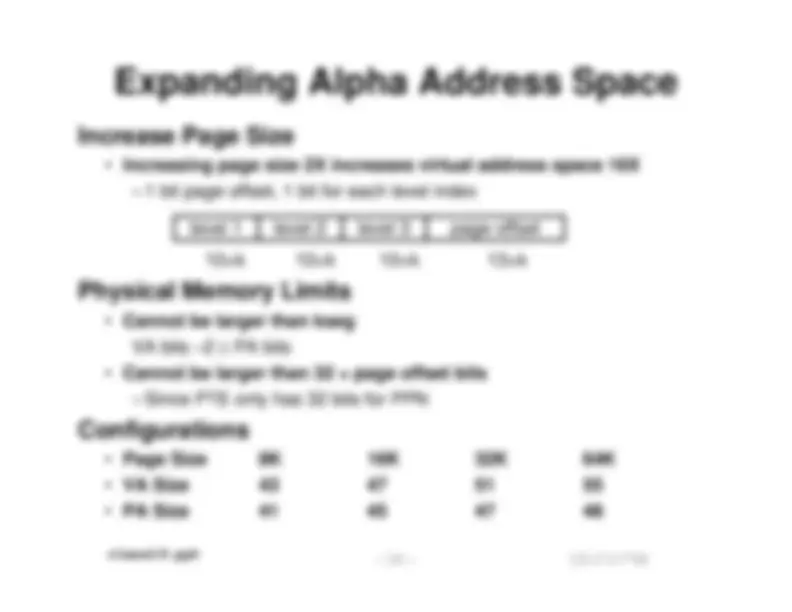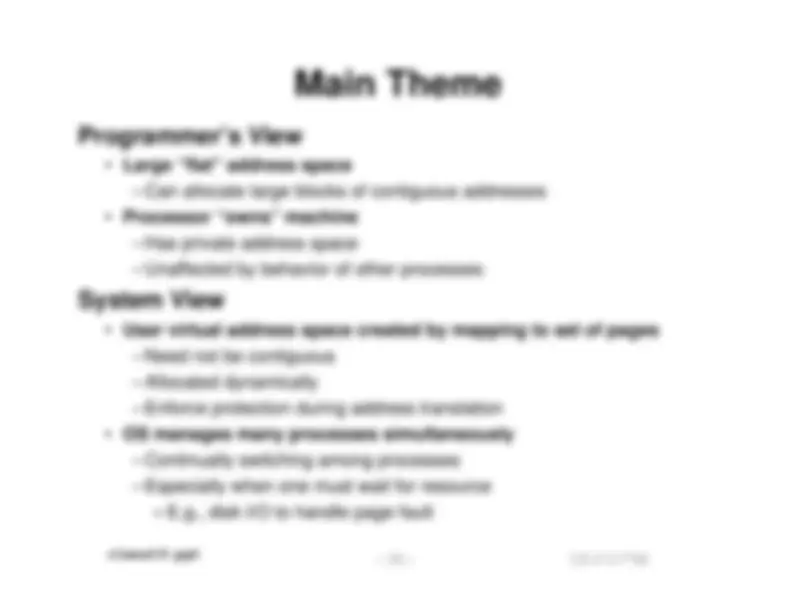Download Virtual Memory, Lecture Slide - Computer Science and more Slides Introduction to Computers in PDF only on Docsity!
Virtual Memory
October 27, 1998
Topics
- Motivation
- Address Translation
- Accelerating with TLBs
- Alpha 21X64 memory system
Levels in Memory Hierarchy
CPU CPU
regsregs
C a c h e
Memor Memor yy (^) diskdisk
size: speed: $/Mbyte: block size:
200 B
3 ns
4 B
Register Cache Memory Disk Memory 32 KB / 4MB 6 ns $100/MB 8 B
128 MB
100 ns $1.50/MB 4 KB
20 GB
10 ms $0.06/MB
larger, slower, cheaper
4 B 8 B 4 KB
cache virtual memory
Process 1:
Virtual addresses (VA)
Physical addresses (PA)
VP 1 VP 2
Process 2:
PP
0 address translation
0
N-
0
N- M-
VP 1 VP 2
PP
PP
(Read-only library code)
Address Spaces
- Virtual and physical address spaces divided into equal-sized blocks
- “Pages” (both virtual and physical)
- Virtual address space typically larger than physical
- Each process has separate virtual address space
Other Motivations
Simplifies memory management
- Main reason today
- Can have multiple processes resident in physical memory
- Their program addresses mapped dynamically
- Address 0x100 for process P1 doesn’t collide with address 0x100 for process P
- Allocate more memory to process as its needs grow
Provides Protection
- One process can’t interfere with another
- Since operate in different address spaces
- Process cannot access privileged information
- Different sections of address space have different access permissions
Macintosh Memory Management
Allocation / Deallocation
- Similar to free-list management of malloc/free
Compaction
- Can move any object and just update the (unique) pointer in pointer table
“Handles”
P1 Pointer Table
P2 Pointer Table
Process P
Process P
Shared Address Space
A
B
C
D
E
Macintosh vs. VM-based Mem. Mgmt
Both
- Can allocate, deallocate, and move memory blocks
Macintosh
- Block is variable-sized
- May be very large or very small
- Requires contiguous allocation
- No protection
- “Wild write” by one process can corrupt another’s data
VM-Based
- Block is fixed size
- Single page
- Can map contiguous range of virtual addresses to disjoint ranges of physical addresses
- Provides protection
- Between processes
- So that process cannot corrupt OS information
virtual page number page offset virtual address
physical page number page offset physical address
p–1 0
address translation
m–1 p
n–1 p p–1 0
Notice that the page offset bits don't change as a result of translation
VM Address Translation
Parameters
- P = 2p^ = page size (bytes). Typically 1KB–16KB
- N = 2n^ = Virtual address limit
- M = 2m^ = Physical address limit
Page Tables
Page Table Operation
Translation
- Separate (set of) page table(s) per process
- VPN forms index into page table
Computing Physical Address
- Page Table Entry (PTE) provides information about page
- Valid bit = 1 ==> page in memory. » Use physical page number (PPN) to construct address
- Valid bit = 0 ==> page in secondary memory » Page fault » Must load into main memory before continuing
Checking Protection
- Access rights field indicate allowable access
- E.g., read-only, read-write, execute-only
- Typically support multiple protection modes (e.g., kernel vs. user)
- Protection violation fault if don’t have necessary permission
VM design issues
Everything Driven by Enormous Cost of Misses:
- Hundreds of thousands to millions of clocks.
- vs units or tens of clocks for cache misses.
- Disks are high latency
- Typically 10 ms access time
- Moderate disk to memory bandwidth
- 10 MBytes/sec transfer rate
Large Block Sizes:
- Typically 1KB–16 KB
- Amortize high access time
- Reduce miss rate by exploiting spatial locality
Perform Context Switch While Waiting
- Memory filled from disk by direct memory access
- Meanwhile, processor can be executing other processes
VM design issues (cont)
Fully Associative Page Placement
- Eliminates conflict misses
- Every miss is a killer, so worth the lower hit time
Use Smart Replacement Algorithms
- Handle misses in software
- Plenty of time to get job done
- Vs. caching where time is critical
- Miss penalty is so high anyway, no reason to handle in hardware
- Dmall improvements pay big dividends
Write Back Only
- Disk access too slow to afford write through
CPU
Trans- lation Cache Main Memory
VA PA miss
hit data
Integrating VM and cache
Most Caches “Physically Addressed”
- Accessed by physical addresses
- Allows multiple processes to have blocks in cache at same time
- Allows multiple processes to share pages
- Cache doesn’t need to be concerned with protection issues
- Access rights checked as part of address translation
Perform Address Translation Before Cache Lookup
- But this could involve a memory access itself
- Of course, page table entries can also become cached
Address translation with a TLB
virtual page number page offset^ virtual address
physical address
N–1 p p–1 0
valid tag physical page number valid
dirty valid valid valid
valid tag data
data
= cache hit
tag (^) index byte offset
=
TLB hit
process ID
TLB
Cache
Alpha AXP 21064 TLB
- page size: 8KB
- hit time : 1 clock
- miss penalty : 20 clocks
- TLB size : ITLB 8 PTEs, DTLB 32 PTEs
- placement: Fully associative

